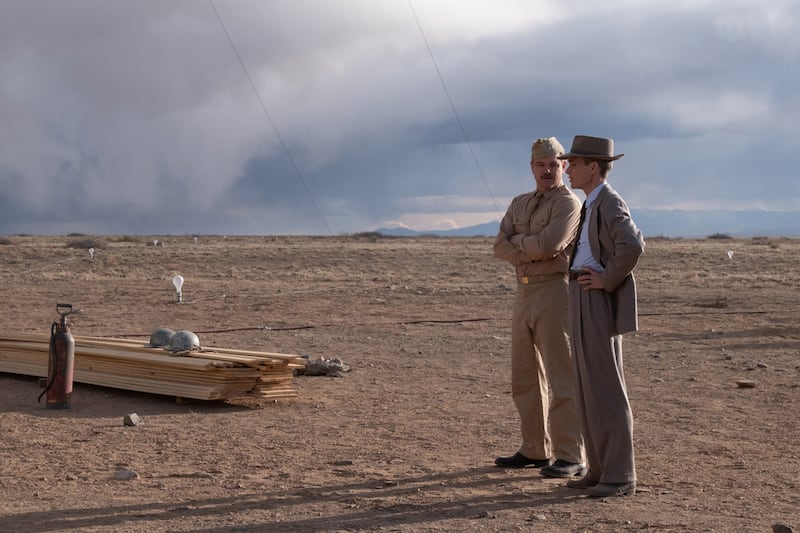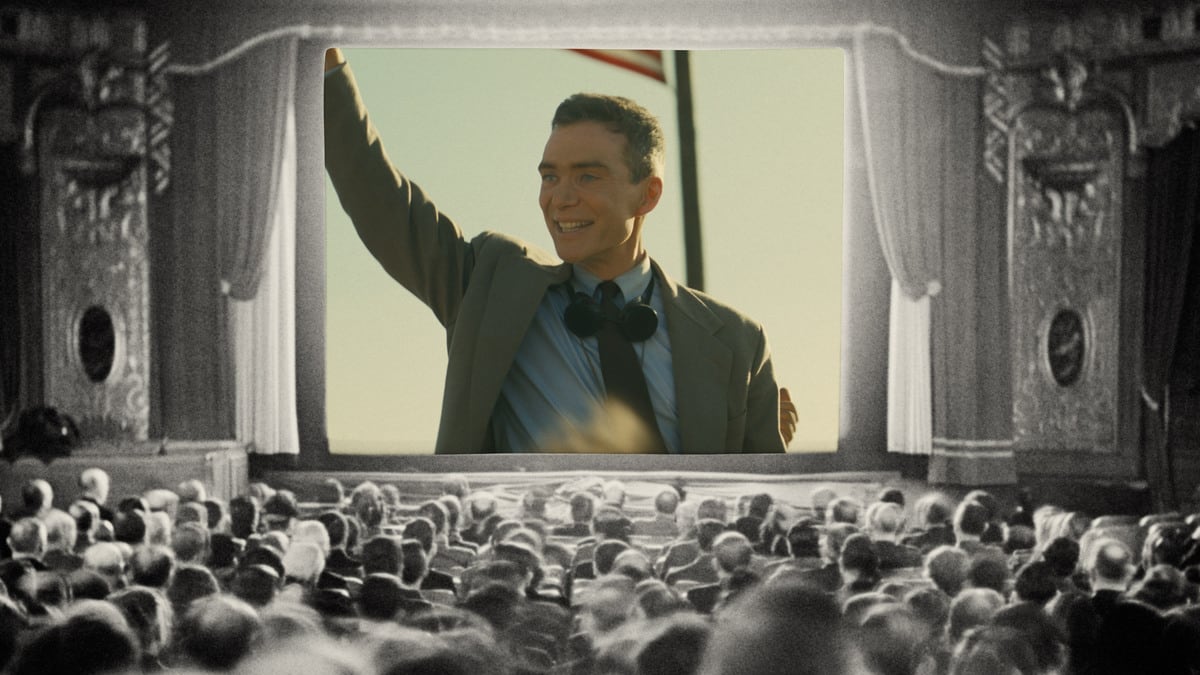For much of the year, the most pressing question for moviegoers was whether to see Greta Gerwig’s vibrant meta-comedy Barbie or Christopher Nolan’s World War II epic Oppenheimer on July 21. Now that the date has passed, it’s almost a given that the polar-opposite films will be devoured as a double feature, if not both experienced in a theater at some point. (They’ve already done huge numbers at the box office.)
However, folks that are particularly excited about seeing Oppenheimer, but who missed an opportunity to see it opening weekend, are still left with a huge conundrum: to see it in IMAX or not to see it in IMAX?
It seems like a large number of Nolan fanatics have landed on the former, given that many of the extremely limited IMAX 70mm showings of Oppenheimer have sold out in its first week. And other showings, at least in New York City (where I’m based), only have terrible, neck-craning seating options available. Some moviegoers are so determined to see the biopic the “proper way,” they’ve traveled for hours to watch it in one of the 19 U.S. theaters where IMAX 70mm showings are available. Of course, Nolan—the film’s director and the man who practically revolutionized the high-resolution, large-screen format—argues that his latest film should be seen, as he intended, on the biggest screen possible.
What I’m about to say is probably considered heresy to Nolan enthusiasts and Nolan himself and will have me banned from the nerdiest sectors of Film Twitter. But it’s perfectly fine to have your first experience with Oppenheimer on a standard or at least non-IMAX screen. (In addition to IMAX 70mm and IMAX Digital, the film is also playing in traditional 70mm, traditional 35mm, and Dolby Cinema formats.)
I certainly don’t mock this preference or roll my eyes at Nolan for urging fans to see Oppenheimer in this particular, more expensive format. (The film was shot on IMAX cameras for a reason.) However, it speaks to the immediacy of the biopic, both on a technical and emotional level, that it’s able to accomplish what the director sets out to do, even if it’s not in the most ideal setting. If anything, I’d argue it’s more urgent to go to a theater that you know will have great sound. And if you’re familiar with the types of crowds at your surrounding theaters, find one with an enthusiastic vibe.
I’ve already seen Oppenheimer twice, which is two more times than I expected—at least, this soon. The first time (on the Sunday of opening weekend), I was able to grab the only ticket left at a regular 35mm screening at AMC on 19th Street in New York the night before. Maybe because I hadn’t spent the past few months making preparations to see the film—Barbie being my first priority—it hadn’t even occurred to me that I was watching it in the least desirable format.

Mainly, though, it’s hard to feel like you’re being robbed of a maximal sensory experience, regardless of screen size, when watching a movie as overwhelming and potent as Oppenheimer. From its sweeping cinematography to its anxiety-inducing score, the three-hour-long film is arguably his most mesmerizing work to date. Likewise, I found myself being sucked into the screen from the initial low-angle shot of Cillian Murphy, who plays the titular physicist, staring pensively at ripples in a pond—a visual motif that comes back to haunt him later after he’s built the first atomic bomb.
Much of Oppenheimer’s success relies on a deft performance by Murphy. (He does some of the greatest eyeball-acting I’ve seen in years.) However, the film is primarily engaging because Nolan makes every single second on screen feel extremely urgent, even the more tedious third act that basically becomes 12 Angry Men. He does this, in part, by punctuating the movie with images of particles, sparks, ripples of water, galactic views of Earth, and, of course, explosions to underscore the existential stakes of Oppenheimer’s invention and how we are all gravely impacted by it. We also experience the anxiety and off-and-on dread of the main protagonist through Ludwig Göransson's extremely active score. All this to say, you don’t have to seek out the largest screen available for all these cinematic tricks to do their job.
In all fairness, my first screening was likely bolstered by the fact that it was opening weekend. And everyone in the theater—and the lobby, where adults and children attending Barbie were decked out in pink—presumably felt like they were partaking in some national celebration. I also find that large movie chains, like AMC or Regal Cinemas, are where you get the most audience feedback. Likewise, everyone clapped after Nicole Kidman’s famous ad that plays right before the movie. This audience was also comfortable giggling at Oppenheimer’s occasionally funny banter and awkward sex scenes, despite the largely solemn tone of the film. At the end, everyone clapped.
However, when I saw it a second time, at the Alamo Drafthouse in Lower Manhattan, everyone seemed generally less enthused, despite how many people I heard saying they enjoyed the film as they exited the theater. My guess is that it had to do with the fact that it was a weeknight after people had gotten off work. I assume a Friday night or weekend screening at the same location may have been more lively.

That said, there are so many ways to maximize your Oppenheimer viewing experience, even if you can’t maximize the screen you see it on. I also recommend following Isabelle Huppert’s “no snack and no drink” rule, to allow your mind and body to solely react to what you see and hear throughout the film—and so you don’t have to get up during its three-hour runtime to pee.






